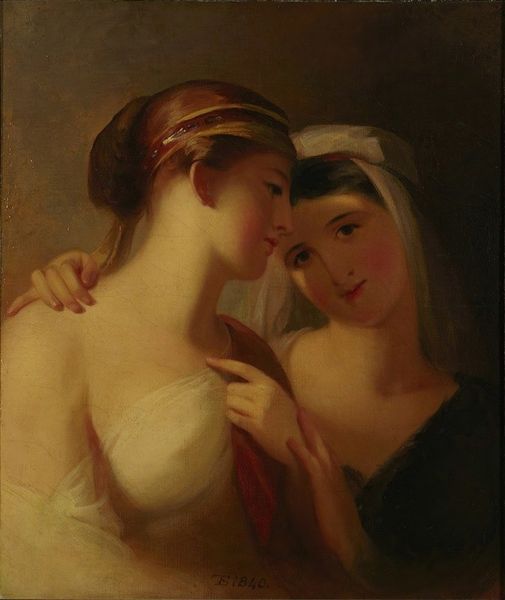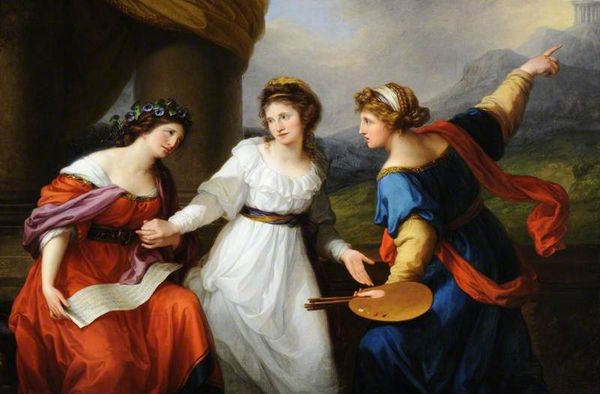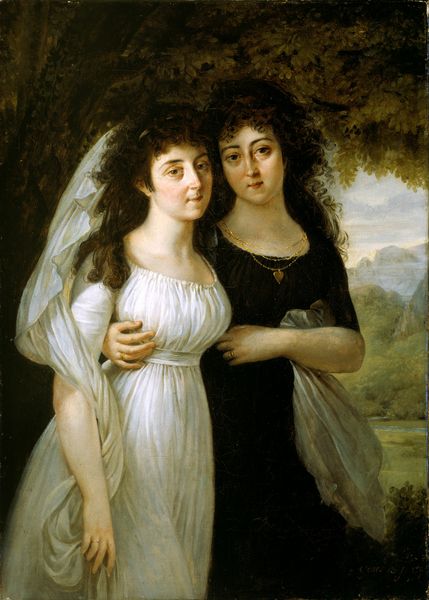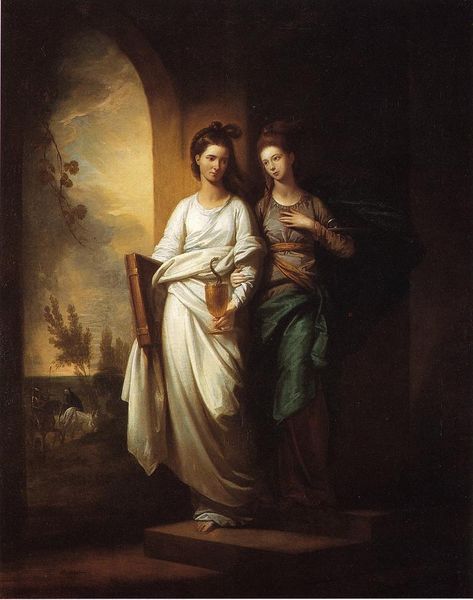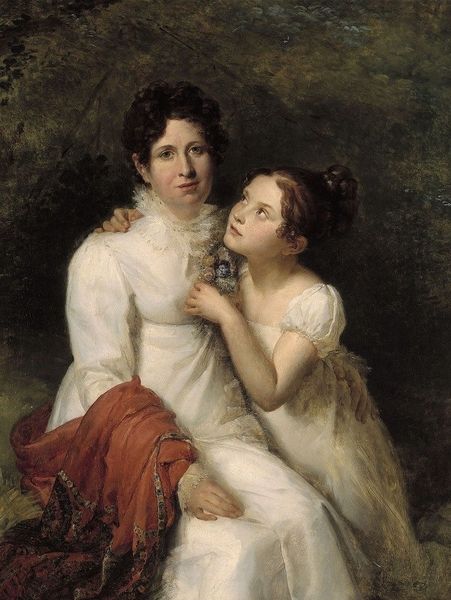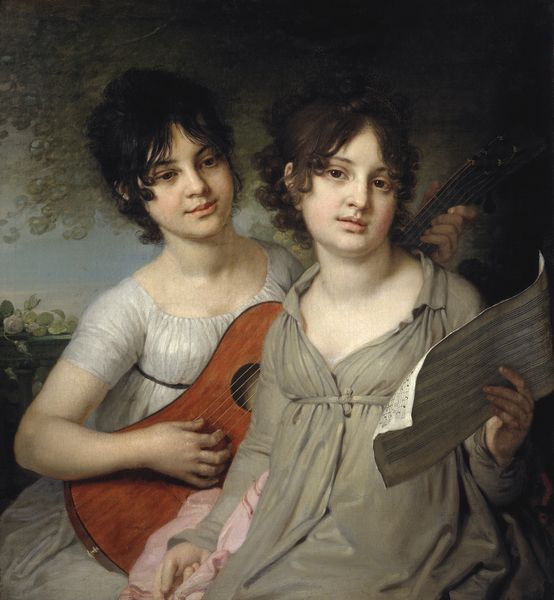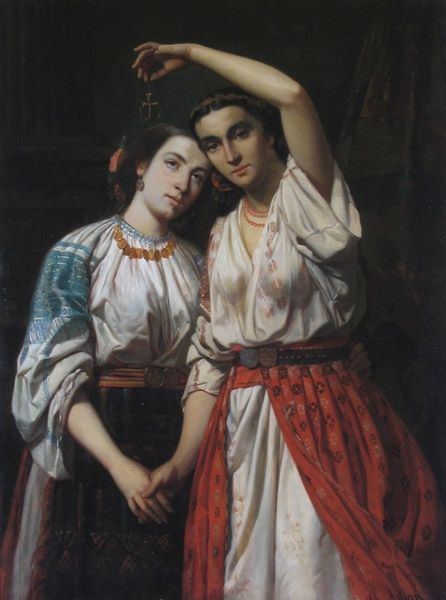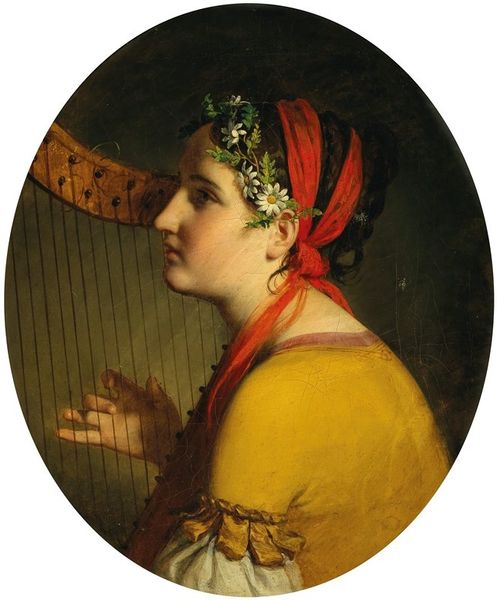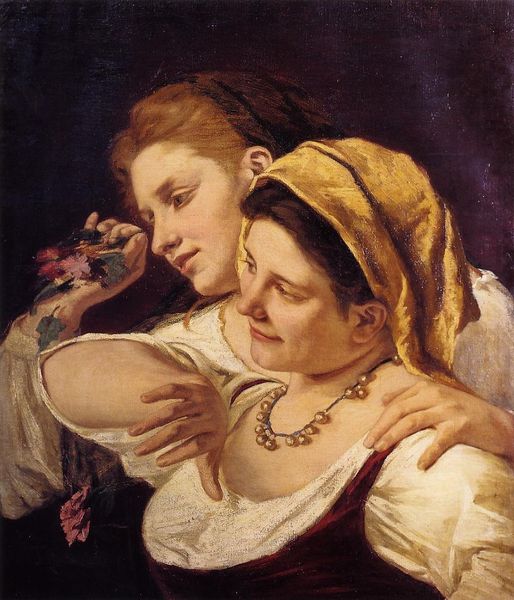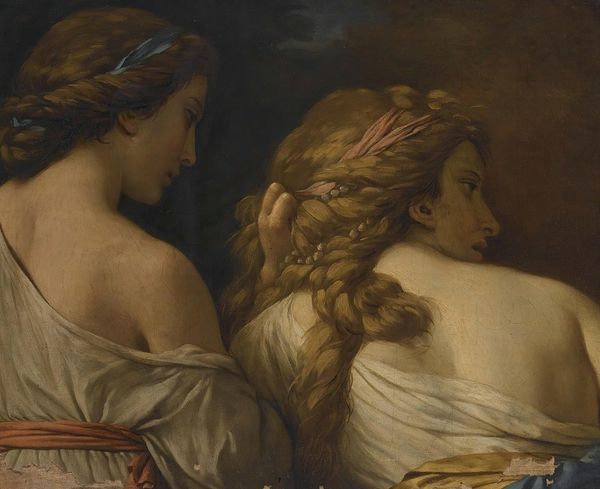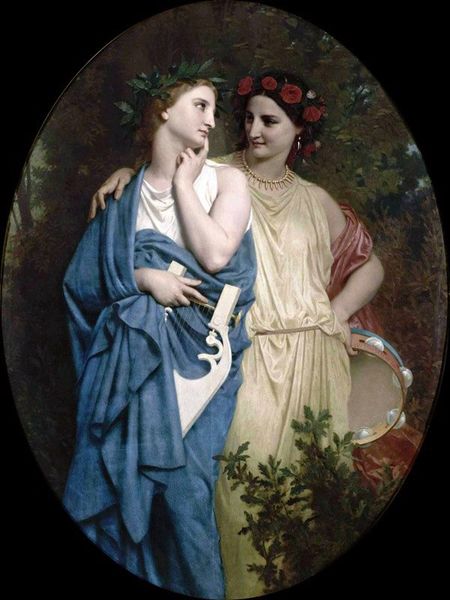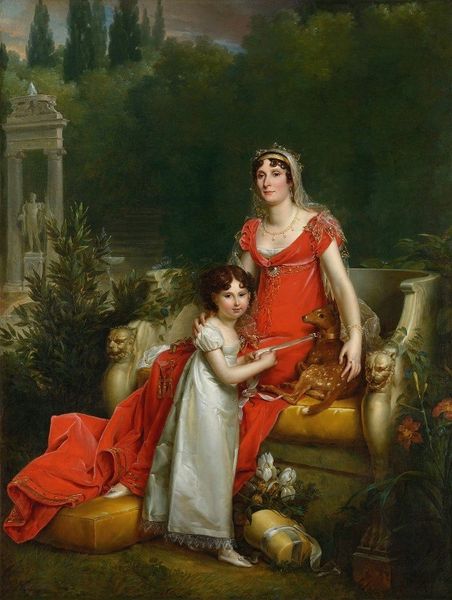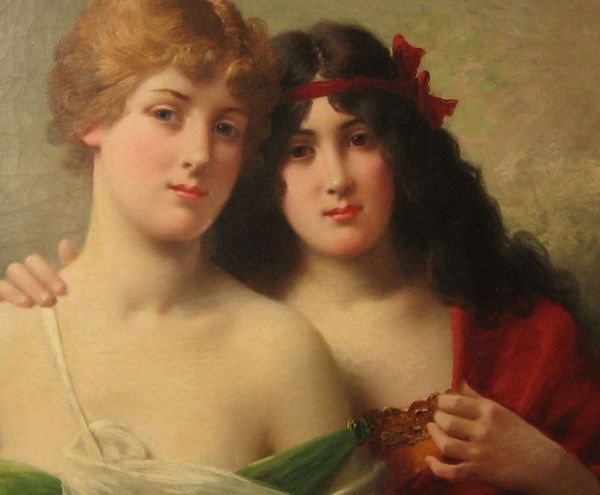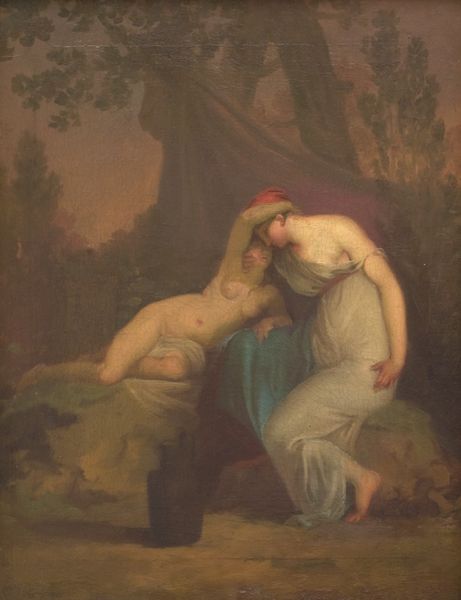
Dimensions: height 118.5 cm, width 90.5 cm, depth 12 cm
Copyright: Rijks Museum: Open Domain
Moritz Calisch painted these two women in Italian dress, sometime in the mid-19th century, using oil on canvas. Notice the musical instrument, a lute. Historically, the lute symbolizes harmony, love, and contemplation, reaching back to ancient Greece, where stringed instruments were associated with Apollo, the god of music and light. This symbol reappears in Renaissance paintings, often in allegories of love or concerts of the muses. However, the lute's presence here strikes a different chord. It is not being played, rather it is decoratively displayed. Similarly, the embrace that connects these women, while tender, has a performative quality. Their gaze drifts off, as if they are performing a spectacle for an invisible audience. The painting hints at the romanticized vision of Italian life popular at the time. In effect, the artist evokes a sense of melancholic longing for an idealized past. This symbolic representation of 'otherness' taps into our collective memory, a subconscious desire for an exoticized, perhaps unattainable, world. The lute, like a recurring dream, continues to resonate through art history, its strings vibrating with evolving cultural meanings.
Comments
No comments
Be the first to comment and join the conversation on the ultimate creative platform.
